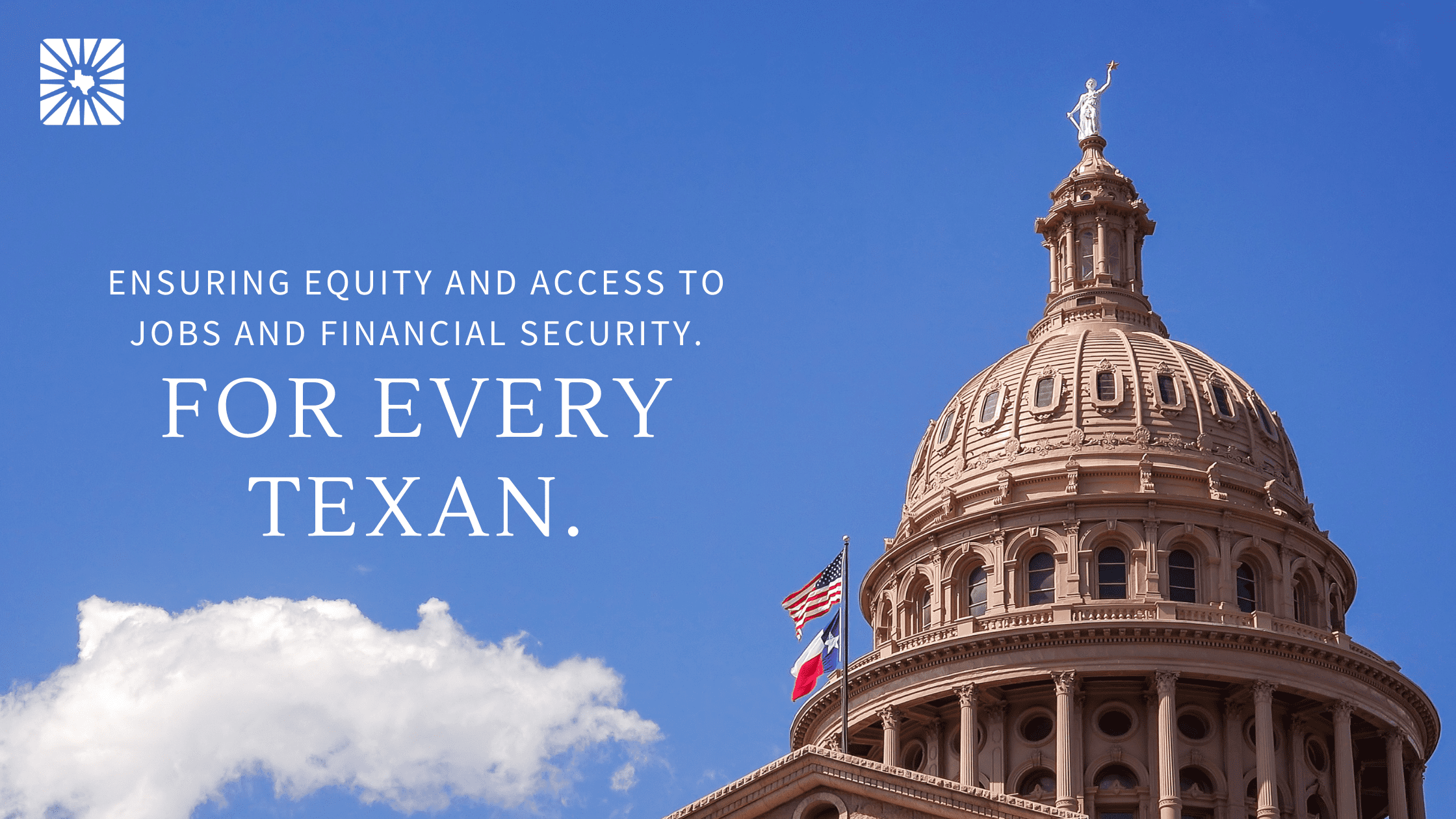Over 1 million Texans are currently receiving unemployment insurance benefits, which have been critical for them and their families, and for starts to get back on its feet, and more people become fully vaccinated, there’s still a sharp disconnect between the job market and those who are still seeking suitable work and making do thanks to the additional benefits provided through federally funded expanded benefits. On Monday, Gov. Abbott announced that he’ll pull the rug out from unemployed workers by opting out of all pandemic-related federal unemployment benefits starting June 26. This includes the additional $300 per week in unemployment benefits some workers are receiving, as well as unemployment benefits for those who are self-employed or gig workers.
The pandemic has adversely impacted communities of color, making the racial inequity of this crisis impossible to ignore. The unemployment toll on workers of color is stark: in March just 4.8% of white workers were unemployed, while 14% of Black and 9% of Hispanic workers were unemployed.
When the governor says the Texas economy is booming, it’s hard to see a silver lining for the communities experiencing such high unemployment. And stripping away federal unemployment benefits isn’t an actual solution to the problem.
This decision is shortsighted in many ways. These additional benefits are propping up demand in the economy. In just the 10 weeks that are being forfeited, an estimated $7.3 billion in benefits would have come into the state, impacting the wellbeing of 1.3 million workers and their families. When you consider the multiplier effect of these benefits, which Moody’s Analytics estimates to be $1.61, the forgone benefit to the state economy balloons to $11.8 billion in economic activity.
Aside from the enormous size of the stimulus, this cut is horrible policy for Texas as these benefits are entirely federally funded, meaning they have no impact on the state’s unemployment insurance trust fund. In fact, cutting these benefits means our federal tax dollars, which should be coming back to our state, are instead being spent in other states’ economies where governors understand the needs of their unemployed workers and the benefit of this aid to their local economies.
Governor Abbott’s claim that the number of jobs available now is “almost identical” to the number of people who are unemployed fails to acknowledge that there is always some misalignment between the jobs and workers available. That misalignment may be even greater now than it was pre-pandemic. There are many factors including job location, required skill level, and terms of employment that make the job market much more nuanced than the simple math equation used to justify this misguided decision.
The availability of pandemic unemployment benefits isn’t the thing holding workers back from returning to the workforce. Instead, evidence strongly suggests that women are still shouldering caregiving responsibilities in the absence of childcare, and this has forced many out of the labor market altogether. Simply, there are fewer workers available because so many aspects of life and work are still upended from the pandemic, making full-time or even part-time work impossible for workers who are also the primary caregivers in their family. Cutting back on pandemic unemployment insurance provisions will not increase the labor supply of those who cannot work because of COVID-related caregiving responsibilities.
What’s holding back stronger employment numbers is the resistance from policy makers to improve the conditions under which we expect people to work. We know proposals to enhance child care infrastructure, improve workplace safety, and provide living wages would have a huge impact on labor market participation. But instead our governor is choosing to once again put corporate interest ahead of the millions of struggling Texas families.
Workers who find themselves in lower quality jobs than they previously had will end up set back even further. These lower quality jobs mean higher rates of uninsured or underinsured, higher rates of debt or default on existing debt, and lower rates of savings for retirement, education or rainy day funds.
Corporations and Wall Street have made out just fine through the pandemic. Low wage workers have been hardest hit, and it will take time for the job market and labor market to find an equilibrium. Emergency benefits like pandemic UI have been critical to keeping millions of people afloat during this crisis. The crisis isn’t over yet, but acting like it is will not only punish workers and their families while they continue to get back to some level of “normalcy” in the coming months, but will also slow the state’s economic recovery.
Finally, it says nothing good about the value of work when the business community presumes that a meager supplement of $1200 per month is still better than accepting a low-wage job with no health insurance or benefits.
